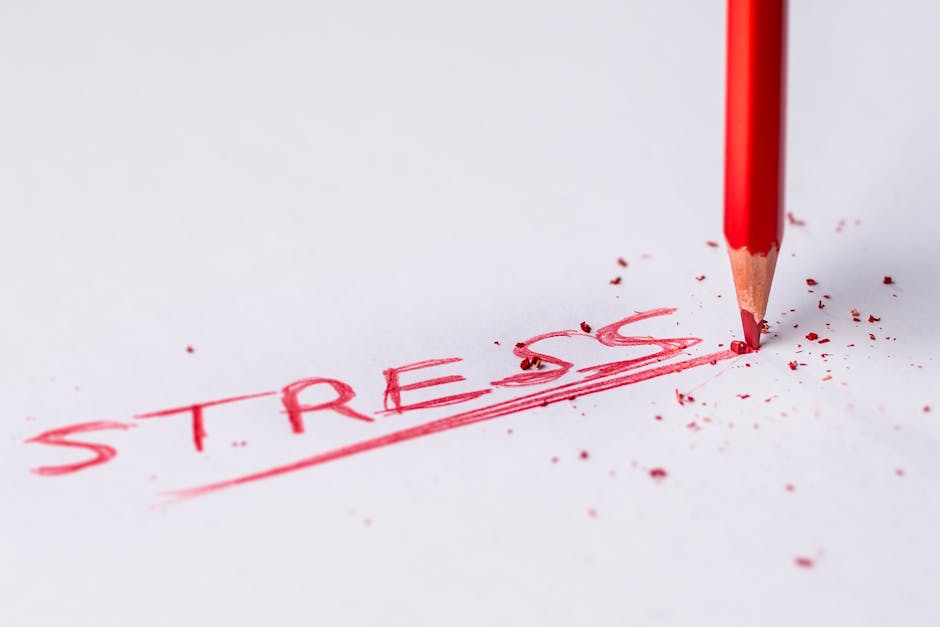So, welcome back, this is the next lecture
on stress tensors. So in the last lecture, we have categorically seen
what is Cauchy’s stress, sigma. And we have seen that the definition of sigma
indicates what is the internal force that gets developed within a plane or a body
at a point due to some action of external forces. Now, what is sigma? In
fact sigma is a stress tensor. So, Cauchy stress can be considered a
tensor. So, now we are going to define a new term what is known as a tensor. If you want to study or
if you want to do modeling in continuum mechanics, as the complexity of the problem increases, it
is always convenient to define what is known as a tensor. And we have already stated stress
is a tensor quantity. Now, what is a tensor? We know what are scalars, and we know what are
vectors. So tensor is also a similar kind of quantity. So why tensor, because it is very
convenient to express stress as a tensor. In short stress itself is a tensor. In
simple terms, we can say that tensor can be defined as a quantity with
magnitude and multiple spatial directions. So, possibly you will think like what is the
difference between a tensor and a vector. Vector also has a magnitude and a direction,
but we will see that vector has magnitude, but it will have only one direction whereas in
the case of tensor multiple directions are there. So that is the essential difference
and tensor is a more general term. And the subsets of the tensor are scalar, vector, and
any other tensor of higher order. So different tensors which are popularly used are yes, that is
what I told the first one is scalar the simplest tensor is scalar and it is called zero-order
tensor. A quantity which has only magnitude and zero direction, scalar we all of us know that it
does not have any direction it has only magnitude. So we call it zero direction. And zero order
tensor which is a scalar that has three raised to zero, where zero represents the number of
directions. So three raises to zero are equal to one element and that is true, it is merely a number
that shows the magnitude. Scalar is a zero-order tensor. The second one is a vector, which is the
first-order tensor. A vector is a quantity, which has magnitude and one direction you
can see that vector has only one direction. Accordingly, the number of elements will be three
raised to one which is equal to three elements. So if you have an x y z axis you have a vector in
three different directions. So that is possible. So that is what it means it has three
elements. So it has one direction every vector is associated with only one direction. And it
has three raised to one which is three elements and specifically, Cauchy stress is
known as a second order tensor. Why does Cauchy stress sigma have magnitude and two
directions? Now, what are these two directions? Now we will see specifically how these two
directions come into the picture when you define a stress component and it is very easy also if you
remember Cauchy stress, we represent it as sigma xx or sigma xy. So there are two symbols
associated and that is why it is always associated with two directions it is associated
with which plane it acts, which means the normal to that particular plane.
It is also dependent on, which direction that particular traction acts. So we will
discuss that a bit later, only to specify here is Cauchy stress is a second-order tensor.
It has magnitude and it has two directions. So this is a second-order tensor and it has three
squares equal to nine elements which we have already seen in the Cauchy stress tensor. There
are nine elements and the second order tensor linearly maps to vectors that also we have seen.
We have seen that t is sigma transpose of n. So it linearly transforms
to vectors, that is Cauchy’s formula. Now, some aspects of tensor to be very specific,
may not be useful, but then this is important to understand the tensor. Let us say two, there
are two vectors u and v a tensor T is a second order tensor if it linearly maps vector v to u
as can be shown here and the second order tensor satisfies the properties of linear transformation.
So this is what has been written, t maps v to u or there is a linear mapping of v to u.
If you compare this with Cauchy’s formula, it is more or less the same thing that is how we define
The Cauchy stress tensor is a second-order tensor. Having said that, now the next job is to interpret
the components of the Cauchy stress tensor. We know that there are nine elements. Now, what are
these nine elements? What does it represent? So, for that, we need to define the Cartesian
coordinate. So you have a Cartesian coordinate x y and z. And to make it simple a
control volume is also shown, control volume is a very common terminology that
is used in continuum mechanics or any other form of mechanics. The con this control volume
is not required, but to make things simple and for one to understand it has been shown.
So we have a Cartesian coordinate x y z, this is positive x direction, this is positive
y and this is positive z which is also important here. So you can consider a positive x plane, now
x is an axis which is meant by x plane. It means the plane on which x direction is the
normal to that plane that is what is written here the plane whose normal is in the positive
x direction. So it is called the positive x plane. So what will be the negative x plane?
The negative x plane will be here because the outward normal to this plane is in the
negative x direction. So this is the negative x plane. So you need to understand this very
carefully. Consider positive x planes, so we are talking about this particular plane.
That is a positive x plane because why because normal to this particular plane x this is the y z plane,
this is y, this is z. So this plane is y z plane. Now for this y z plane, the normal is in the
direction of x. So that is what it means. So x plane means, positive x plane means, y
z plane which is shown here so, positive x, negative x plane both are there. Now we will
come back to Cauchy’s formula and cauchys stress sigma. So now, the normal vector to x
plane¬ this positive x direction. Please understand the normal vector
to x plane¬. So this is the x plane. The normal is x. So you can easily write
what is the normal vector. So this is the normal vector. So for the x
direction, it is one zero. So n T is given in this manner and similarly, for y
it will be zero one zero, and for z zero one. So normal vector to x plane is
defined that is n transpose is given. Now, what are the components of traction vector
tx, ty, and tz? You already have this to be, that is tx, ty, tz is equal to sigma and n.
So if you substitute the value of n that is for positive x plane one zero here, so it will
be one zero, and do the matrix operation, you will see that t x is equal to sigma xx, ty
will be equal to sigma xy. So this is sigma xx, sigma xi. So ty will be equal to sigma x y and
t z is equal to sigma x z. So what does it mean, it means that the components which are present
in cauchys stress tensor are components of traction vector in a given direction.
So if you see, you can see that sigma xx is the x
component of traction vector on x plane. So there are two references which are coming and that
is why we said that there are two directions. It is the x component that is the traction vector
in the x direction and it is acting on the x plane. So there are two things which are coming.
Similarly, you have sigma xy. Sigma XY is the y component of the traction vector acting on the x plane.
Similarly, you have the z component of the traction vector acting on the x plane. Similarly, other components of
Cauchy stress tensor can be identified based on Cauchy’s formula. So that is what is the meaning
of each of the terms which are present in the Cauchy stress, it is nothing but the components
of the traction vector acting in a specific direction. So, the component of the Cauchy stress
tensor, in general, is sigma ij, it is the j component of the traction vector it can be
x, it can be y, and it can be z. So it is a j component of traction vector
acting on the ith plane. So the first index I show which plane it is associated
with. Which plane means, which is the normal and j is the direction of that component, direction
of the component of traction vector. So i is the plane on which traction is considered,
and j is the direction in which the traction component is considered.

So we can see the overall
representation of the Cauchy stress tensor. So first is stresses acting on x
plane. Now which is the x plane, this is the x plane. So there are two
x planes, this is negative x and this is positive x. So what are the
stresses which are acting, we have sigma xx in the direction of x?
So, all of them are acting on x plane. Then we have sigma XY and sigma xz. Similarly,
on the other side of another plane which is a negative x plane we have sigma XY, sigma xz, and sigma xx.
It is identical but it is on the other side. Then we have stressed on y plane. Now what is
meant by y plane, a plane with y direction as the normal. So you are talking about this and this.
So you have positive y and this is negative y. Similarly, in this, you have
sigma yy, sigma yy, which is the direction, in the direction
of y and you have sigma y x, sigma yz, similarly sigma y x and sigma yz. Then
we have stresses acting on the z plane, what are the stresses acting on the z plane, and
what is the z plane, this is the positive z plane and this is the negative z plane and
this stress is acting as sigma zz, sigma zx, sigma zy. Similarly, here also
you have sigma zz, sigma zx, and sigma zy. So these are the representation of the components
of Cauchy stress on a given control volume. So, all these stress components are acting at
a point. Now we need to keep in mind that I have shown a control volume in the figure, and
that is only for understanding how the stresses are oriented. Otherwise, it does not serve
any purpose. We need to still understand that whatever stress components are there in
the Cauchy stress tensor, it is acting at a point and the control volume, the cuboid is shown only
to indicate the plane on which it is acting. So that’s that notion we should not forget.
So it is stress acting at a point. Now having said that, we need to now define some
sort of sign convention of the Cauchy stress tensor. So the given sign conventions are the traction
components on the positive plane. So now we have already marked what is a positive plane.
So the traction component on the positive plane acting in the positive direction means the
direction of x y z which is in the positive direction, so is positive. So you have a positive
plane and the traction component is acting in the positive direction, so it is positive.
Similarly, if you have a positive plane and the traction component is acting in
a negative direction, so it is negative. For the negative plane, if the plane is negative
and the traction component is acting in a negative direction, so it is positive. And the final case
is negative plane traction component direction is a positive direction, it is negative. So this is
one sign convention, you can see that numerous sign conventions are available, and uh one may use them at his convenience, but if you follow one sign convention,
you need to follow it throughout. So this is one convenient way of uh defining sign
convention, there are assigned conventions that are available based on movement also, and sometimes
it may be difficult to understand. So this is very easy and very easy to define as well, one example
is given here. So this is the positive x plane, and the stresses acting are sigma xx, sigma
XY and sigma xz. If you consider sigma xx, this is acting on a positive x plane.
And sigma xx is in acting in the positive x direction. So that is why it is positive,
similarly to sigma XY and sigma xz. Now consider the case of the negative x plane, if you consider sigma
XY, this is a negative plane, negative x plane whereas, this is acting in the positive y direction.
So negative plane positive y direction, so it is negative. Similarly, all the stress
component signs can be assigned. So this is the sign convention of the Cauchy stress tensor. So what
is the summary that we have understood till now? There are three normal
components or normal stresses, sigma xx, sigma yy, and sigma oz. You can
see that in this figure, you have sigma x x, sigma yy, and sigma zz, these are acting in
the same direction as that normal. So there are three normal components or normal
stresses sigma xx, sigma yy, sigma zz or it is merely stated as sigma x, sigma
y, sigma z which is a common terminology, which we normally use in mechanics.
There are six shear components or shear stresses to be very specific all indices
were I not equal to j, here it is I equal to, here I not equal to j. So these are shear
components of traction or shear stresses, it is written either in sigma form or in tau
form. Cauchy stress tensor a second-order tensor quantifies the internal force distribution in a
body at a given position and time corresponding to a given deformation.
Why time is important is because we are considering the condition
corresponding to a given deformation. And internal forces, which that gets developed
followed the basic laws of mechanics. Now one particular aspect of why stress
at a point that information is needed is to, define the equilibrium equation. So it is an
application of why you need to know stress at a point. Now stress at a point is
very important to define the equilibrium equation as we have seen in the beginning, you have seen
that certain requirements need to be satisfied like the equilibrium condition,
the compatibility condition, and so on. Now for defining the equilibrium condition, we
need to specify the equilibrium equation. I will not go into the derivation of this equilibrium
equation it is very basic and is mostly seen by most of you. So by considering a given
control volume, the equilibrium equation can be represented as follows. And you can see that the
components of equilibrium equations are the stress tensor components, the only new term is gamma.
Where gamma is a self-weight of the gravity stress which acts in the z-direction or the vertical
direction and to be very specific stresses are in terms of total stresses in this particular
equation, it is invariably necessary to know stress at a point for defining
equilibrium condition. Now based on equilibrium, we can say that tau yx is equal to tau XY, tau
yz is equal to zy and tau zx is equal to tau xz. Therefore, the stress tensor is represented
by six independent stress components, there are nine components in the Cauchy
stress tensor just because of this condition, we have six independent stress components, and
they are three normal stresses, sigma x, sigma y, sigma z, and three shear stresses tau XY, tau
yz and tau Zx, where tau XY is equal to tau yx. So this is what it is. So that is how it boils
down to six independent stress components. So the final summary of what
we learned in this particular lecture is Cauchy stress, sigma is a second-order
tensor. The element of stress tensor represents components of traction acting on three orthogonal
planes according to a given Cartesian coordinate. Sigma I j means j component of traction vector
acting on the ith plane. Stress tensor sigma has three normal stress components and six shear
stress components. But based on equilibrium, there are six independent stresses
three normal and three shear stresses. All the stress components are acting at a
point that is very relevant and which is very important. The components
of sigma depend on the coordinate axis, please note here as such sigma
is not dependent on the coordinate axis, but the components of sigma, I mean to say
sigma x, sigma xy those are the components or the traction vector components, they
are dependent on the coordinate axis. So there is a distinction that needs to be
very clear, one should not get confused with sigma as a whole and the components of sigma.
Sigma as a whole is not dependent on any axis, but the components of sigma keep changing, but
the overall sigma representation of internal force remains the same depending on the reference axis,
and the component’s magnitude value keeps changing. Stress tensor sigma at any point in the body
defines the internal force distribution of a body. So this is all about this particular
lecture, which we will see in the next lecture.
As found on YouTubeAnimationStudio ꆛ☣ꐕ Be The “Middle Man” And Profit With AnimationStudio Agency License. Here’s How You Can Earn $100, $200, or even $300 For Every Video You Create With AnimationStudio… Activate Your Profit Machine With The Agency License … $197/month For Just $67 One Time Payment
 A high, prolonged cortisol level can mess with a lot of stuff. It’s even been seen to decrease the volume of your hippocampus, the area responsible
for learning and memory, and a reduced hippocampus
is more often seen in people with depression than those without. So all this is to say that the extra stress is probably not doing your brain or your body any favors. And humans are historically
bad at making decisions when they don’t know
what’s going to happen? So, what can you do to
reduce the allostatic load? Reduce stress. Eating well, exercising, and maintaining a regular sleep schedule cannot be overlooked. Exercising alone can
reduce stress hormones, even with just a 20-minute walk. And a different way of
thinking could also help us: an idea called model-free learning. It’s trial and error. Instead of basing your risk assessment on similar examples from the past or envisioning future scenarios, you just take it one step at a time. This way, you reassess and
update your estimate of what’s happening and how to prepare. We’re dealing with a new virus, constantly changing policies, and likely a completely different schedule and maybe even environment. Our brain is on high alert at all times to identify potential threats. This means that even if you’re spending most of your time laying around, your brain isn’t, so try not to beat yourself up for feeling tired or fuzzy, or unmotivated. You just don’t need anything
else to stress about. Now that you know all of this, how are you feeling? Alex: To be honest, I
do still feel the same. Fran: I think I’m feeling a
bit better after watching it. Victoria: It’s
my body is exhausted from feeling things and being under stress all day, all the time. Graham: Whenever I feel
that allostatic load starting to weigh down on me, you know, I can put a
name on it, a face on it, and it makes it a lot
easier to deal with it.
A high, prolonged cortisol level can mess with a lot of stuff. It’s even been seen to decrease the volume of your hippocampus, the area responsible
for learning and memory, and a reduced hippocampus
is more often seen in people with depression than those without. So all this is to say that the extra stress is probably not doing your brain or your body any favors. And humans are historically
bad at making decisions when they don’t know
what’s going to happen? So, what can you do to
reduce the allostatic load? Reduce stress. Eating well, exercising, and maintaining a regular sleep schedule cannot be overlooked. Exercising alone can
reduce stress hormones, even with just a 20-minute walk. And a different way of
thinking could also help us: an idea called model-free learning. It’s trial and error. Instead of basing your risk assessment on similar examples from the past or envisioning future scenarios, you just take it one step at a time. This way, you reassess and
update your estimate of what’s happening and how to prepare. We’re dealing with a new virus, constantly changing policies, and likely a completely different schedule and maybe even environment. Our brain is on high alert at all times to identify potential threats. This means that even if you’re spending most of your time laying around, your brain isn’t, so try not to beat yourself up for feeling tired or fuzzy, or unmotivated. You just don’t need anything
else to stress about. Now that you know all of this, how are you feeling? Alex: To be honest, I
do still feel the same. Fran: I think I’m feeling a
bit better after watching it. Victoria: It’s
my body is exhausted from feeling things and being under stress all day, all the time. Graham: Whenever I feel
that allostatic load starting to weigh down on me, you know, I can put a
name on it, a face on it, and it makes it a lot
easier to deal with it.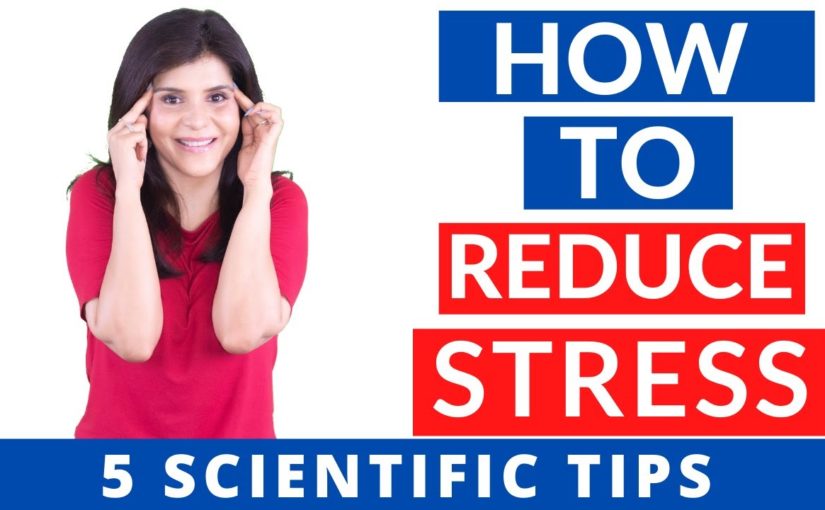
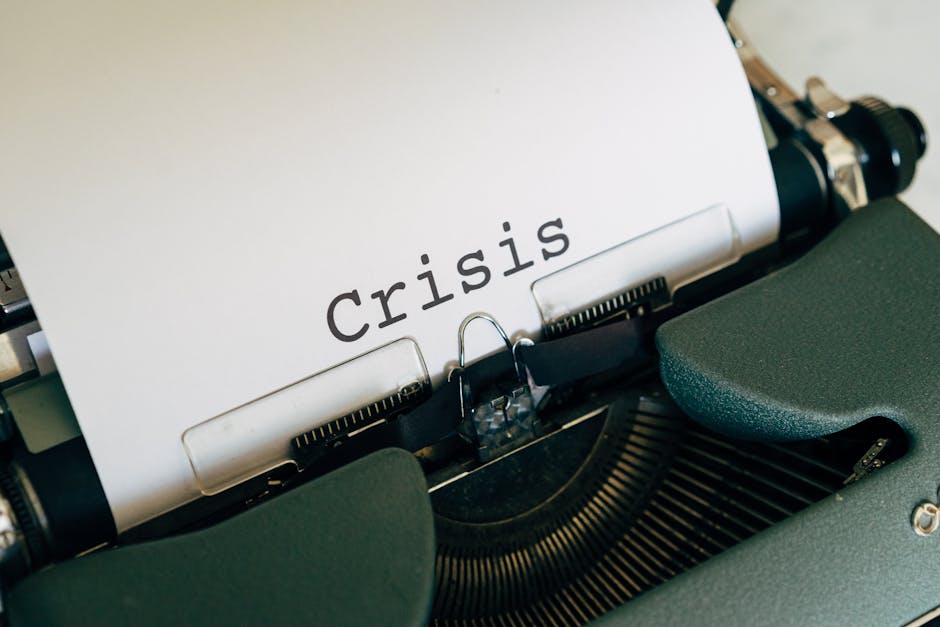
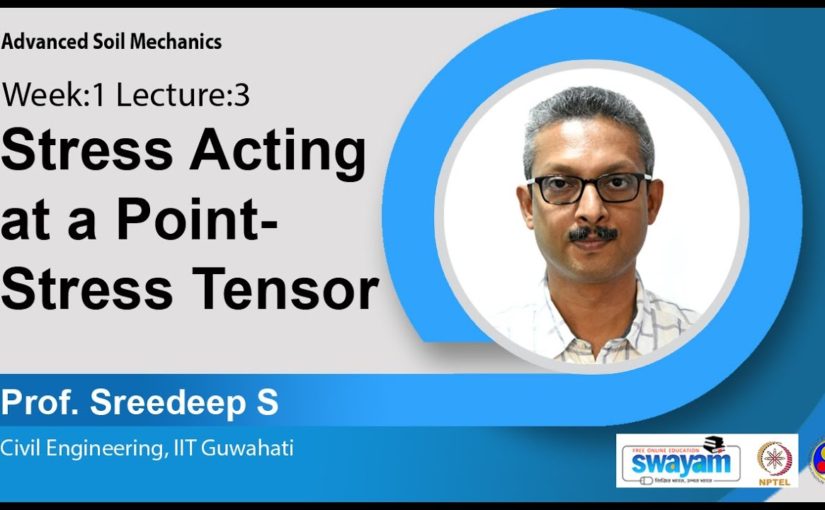
 So we can see the overall
representation of the Cauchy stress tensor. So first is stresses acting on x
plane. Now which is the x plane, this is the x plane. So there are two
x planes, this is negative x and this is positive x. So what are the
stresses which are acting, we have sigma xx in the direction of x?
So, all of them are acting on x plane. Then we have sigma XY and sigma xz. Similarly,
on the other side of another plane which is a negative x plane we have sigma XY, sigma xz, and sigma xx.
It is identical but it is on the other side. Then we have stressed on y plane. Now what is
meant by y plane, a plane with y direction as the normal. So you are talking about this and this.
So you have positive y and this is negative y. Similarly, in this, you have
sigma yy, sigma yy, which is the direction, in the direction
of y and you have sigma y x, sigma yz, similarly sigma y x and sigma yz. Then
we have stresses acting on the z plane, what are the stresses acting on the z plane, and
what is the z plane, this is the positive z plane and this is the negative z plane and
this stress is acting as sigma zz, sigma zx, sigma zy. Similarly, here also
you have sigma zz, sigma zx, and sigma zy. So these are the representation of the components
of Cauchy stress on a given control volume. So, all these stress components are acting at
a point. Now we need to keep in mind that I have shown a control volume in the figure, and
that is only for understanding how the stresses are oriented. Otherwise, it does not serve
any purpose. We need to still understand that whatever stress components are there in
the Cauchy stress tensor, it is acting at a point and the control volume, the cuboid is shown only
to indicate the plane on which it is acting. So that’s that notion we should not forget.
So it is stress acting at a point. Now having said that, we need to now define some
sort of sign convention of the Cauchy stress tensor. So the given sign conventions are the traction
components on the positive plane. So now we have already marked what is a positive plane.
So the traction component on the positive plane acting in the positive direction means the
direction of x y z which is in the positive direction, so is positive. So you have a positive
plane and the traction component is acting in the positive direction, so it is positive.
Similarly, if you have a positive plane and the traction component is acting in
a negative direction, so it is negative. For the negative plane, if the plane is negative
and the traction component is acting in a negative direction, so it is positive. And the final case
is negative plane traction component direction is a positive direction, it is negative. So this is
one sign convention, you can see that numerous sign conventions are available, and uh one may use them at his convenience, but if you follow one sign convention,
you need to follow it throughout. So this is one convenient way of uh defining sign
convention, there are assigned conventions that are available based on movement also, and sometimes
it may be difficult to understand. So this is very easy and very easy to define as well, one example
is given here. So this is the positive x plane, and the stresses acting are sigma xx, sigma
XY and sigma xz. If you consider sigma xx, this is acting on a positive x plane.
And sigma xx is in acting in the positive x direction. So that is why it is positive,
similarly to sigma XY and sigma xz. Now consider the case of the negative x plane, if you consider sigma
XY, this is a negative plane, negative x plane whereas, this is acting in the positive y direction.
So negative plane positive y direction, so it is negative. Similarly, all the stress
component signs can be assigned. So this is the sign convention of the Cauchy stress tensor. So what
is the summary that we have understood till now? There are three normal
components or normal stresses, sigma xx, sigma yy, and sigma oz. You can
see that in this figure, you have sigma x x, sigma yy, and sigma zz, these are acting in
the same direction as that normal. So there are three normal components or normal
stresses sigma xx, sigma yy, sigma zz or it is merely stated as sigma x, sigma
y, sigma z which is a common terminology, which we normally use in mechanics.
There are six shear components or shear stresses to be very specific all indices
were I not equal to j, here it is I equal to, here I not equal to j. So these are shear
components of traction or shear stresses, it is written either in sigma form or in tau
form. Cauchy stress tensor a second-order tensor quantifies the internal force distribution in a
body at a given position and time corresponding to a given deformation.
Why time is important is because we are considering the condition
corresponding to a given deformation. And internal forces, which that gets developed
followed the basic laws of mechanics. Now one particular aspect of why stress
at a point that information is needed is to, define the equilibrium equation. So it is an
application of why you need to know stress at a point. Now stress at a point is
very important to define the equilibrium equation as we have seen in the beginning, you have seen
that certain requirements need to be satisfied like the equilibrium condition,
the compatibility condition, and so on. Now for defining the equilibrium condition, we
need to specify the equilibrium equation. I will not go into the derivation of this equilibrium
equation it is very basic and is mostly seen by most of you. So by considering a given
control volume, the equilibrium equation can be represented as follows. And you can see that the
components of equilibrium equations are the stress tensor components, the only new term is gamma.
Where gamma is a self-weight of the gravity stress which acts in the z-direction or the vertical
direction and to be very specific stresses are in terms of total stresses in this particular
equation, it is invariably necessary to know stress at a point for defining
equilibrium condition. Now based on equilibrium, we can say that tau yx is equal to tau XY, tau
yz is equal to zy and tau zx is equal to tau xz. Therefore, the stress tensor is represented
by six independent stress components, there are nine components in the Cauchy
stress tensor just because of this condition, we have six independent stress components, and
they are three normal stresses, sigma x, sigma y, sigma z, and three shear stresses tau XY, tau
yz and tau Zx, where tau XY is equal to tau yx. So this is what it is. So that is how it boils
down to six independent stress components. So the final summary of what
we learned in this particular lecture is Cauchy stress, sigma is a second-order
tensor. The element of stress tensor represents components of traction acting on three orthogonal
planes according to a given Cartesian coordinate. Sigma I j means j component of traction vector
acting on the ith plane. Stress tensor sigma has three normal stress components and six shear
stress components. But based on equilibrium, there are six independent stresses
three normal and three shear stresses. All the stress components are acting at a
point that is very relevant and which is very important. The components
of sigma depend on the coordinate axis, please note here as such sigma
is not dependent on the coordinate axis, but the components of sigma, I mean to say
sigma x, sigma xy those are the components or the traction vector components, they
are dependent on the coordinate axis. So there is a distinction that needs to be
very clear, one should not get confused with sigma as a whole and the components of sigma.
Sigma as a whole is not dependent on any axis, but the components of sigma keep changing, but
the overall sigma representation of internal force remains the same depending on the reference axis,
and the component’s magnitude value keeps changing. Stress tensor sigma at any point in the body
defines the internal force distribution of a body. So this is all about this particular
lecture, which we will see in the next lecture.
So we can see the overall
representation of the Cauchy stress tensor. So first is stresses acting on x
plane. Now which is the x plane, this is the x plane. So there are two
x planes, this is negative x and this is positive x. So what are the
stresses which are acting, we have sigma xx in the direction of x?
So, all of them are acting on x plane. Then we have sigma XY and sigma xz. Similarly,
on the other side of another plane which is a negative x plane we have sigma XY, sigma xz, and sigma xx.
It is identical but it is on the other side. Then we have stressed on y plane. Now what is
meant by y plane, a plane with y direction as the normal. So you are talking about this and this.
So you have positive y and this is negative y. Similarly, in this, you have
sigma yy, sigma yy, which is the direction, in the direction
of y and you have sigma y x, sigma yz, similarly sigma y x and sigma yz. Then
we have stresses acting on the z plane, what are the stresses acting on the z plane, and
what is the z plane, this is the positive z plane and this is the negative z plane and
this stress is acting as sigma zz, sigma zx, sigma zy. Similarly, here also
you have sigma zz, sigma zx, and sigma zy. So these are the representation of the components
of Cauchy stress on a given control volume. So, all these stress components are acting at
a point. Now we need to keep in mind that I have shown a control volume in the figure, and
that is only for understanding how the stresses are oriented. Otherwise, it does not serve
any purpose. We need to still understand that whatever stress components are there in
the Cauchy stress tensor, it is acting at a point and the control volume, the cuboid is shown only
to indicate the plane on which it is acting. So that’s that notion we should not forget.
So it is stress acting at a point. Now having said that, we need to now define some
sort of sign convention of the Cauchy stress tensor. So the given sign conventions are the traction
components on the positive plane. So now we have already marked what is a positive plane.
So the traction component on the positive plane acting in the positive direction means the
direction of x y z which is in the positive direction, so is positive. So you have a positive
plane and the traction component is acting in the positive direction, so it is positive.
Similarly, if you have a positive plane and the traction component is acting in
a negative direction, so it is negative. For the negative plane, if the plane is negative
and the traction component is acting in a negative direction, so it is positive. And the final case
is negative plane traction component direction is a positive direction, it is negative. So this is
one sign convention, you can see that numerous sign conventions are available, and uh one may use them at his convenience, but if you follow one sign convention,
you need to follow it throughout. So this is one convenient way of uh defining sign
convention, there are assigned conventions that are available based on movement also, and sometimes
it may be difficult to understand. So this is very easy and very easy to define as well, one example
is given here. So this is the positive x plane, and the stresses acting are sigma xx, sigma
XY and sigma xz. If you consider sigma xx, this is acting on a positive x plane.
And sigma xx is in acting in the positive x direction. So that is why it is positive,
similarly to sigma XY and sigma xz. Now consider the case of the negative x plane, if you consider sigma
XY, this is a negative plane, negative x plane whereas, this is acting in the positive y direction.
So negative plane positive y direction, so it is negative. Similarly, all the stress
component signs can be assigned. So this is the sign convention of the Cauchy stress tensor. So what
is the summary that we have understood till now? There are three normal
components or normal stresses, sigma xx, sigma yy, and sigma oz. You can
see that in this figure, you have sigma x x, sigma yy, and sigma zz, these are acting in
the same direction as that normal. So there are three normal components or normal
stresses sigma xx, sigma yy, sigma zz or it is merely stated as sigma x, sigma
y, sigma z which is a common terminology, which we normally use in mechanics.
There are six shear components or shear stresses to be very specific all indices
were I not equal to j, here it is I equal to, here I not equal to j. So these are shear
components of traction or shear stresses, it is written either in sigma form or in tau
form. Cauchy stress tensor a second-order tensor quantifies the internal force distribution in a
body at a given position and time corresponding to a given deformation.
Why time is important is because we are considering the condition
corresponding to a given deformation. And internal forces, which that gets developed
followed the basic laws of mechanics. Now one particular aspect of why stress
at a point that information is needed is to, define the equilibrium equation. So it is an
application of why you need to know stress at a point. Now stress at a point is
very important to define the equilibrium equation as we have seen in the beginning, you have seen
that certain requirements need to be satisfied like the equilibrium condition,
the compatibility condition, and so on. Now for defining the equilibrium condition, we
need to specify the equilibrium equation. I will not go into the derivation of this equilibrium
equation it is very basic and is mostly seen by most of you. So by considering a given
control volume, the equilibrium equation can be represented as follows. And you can see that the
components of equilibrium equations are the stress tensor components, the only new term is gamma.
Where gamma is a self-weight of the gravity stress which acts in the z-direction or the vertical
direction and to be very specific stresses are in terms of total stresses in this particular
equation, it is invariably necessary to know stress at a point for defining
equilibrium condition. Now based on equilibrium, we can say that tau yx is equal to tau XY, tau
yz is equal to zy and tau zx is equal to tau xz. Therefore, the stress tensor is represented
by six independent stress components, there are nine components in the Cauchy
stress tensor just because of this condition, we have six independent stress components, and
they are three normal stresses, sigma x, sigma y, sigma z, and three shear stresses tau XY, tau
yz and tau Zx, where tau XY is equal to tau yx. So this is what it is. So that is how it boils
down to six independent stress components. So the final summary of what
we learned in this particular lecture is Cauchy stress, sigma is a second-order
tensor. The element of stress tensor represents components of traction acting on three orthogonal
planes according to a given Cartesian coordinate. Sigma I j means j component of traction vector
acting on the ith plane. Stress tensor sigma has three normal stress components and six shear
stress components. But based on equilibrium, there are six independent stresses
three normal and three shear stresses. All the stress components are acting at a
point that is very relevant and which is very important. The components
of sigma depend on the coordinate axis, please note here as such sigma
is not dependent on the coordinate axis, but the components of sigma, I mean to say
sigma x, sigma xy those are the components or the traction vector components, they
are dependent on the coordinate axis. So there is a distinction that needs to be
very clear, one should not get confused with sigma as a whole and the components of sigma.
Sigma as a whole is not dependent on any axis, but the components of sigma keep changing, but
the overall sigma representation of internal force remains the same depending on the reference axis,
and the component’s magnitude value keeps changing. Stress tensor sigma at any point in the body
defines the internal force distribution of a body. So this is all about this particular
lecture, which we will see in the next lecture.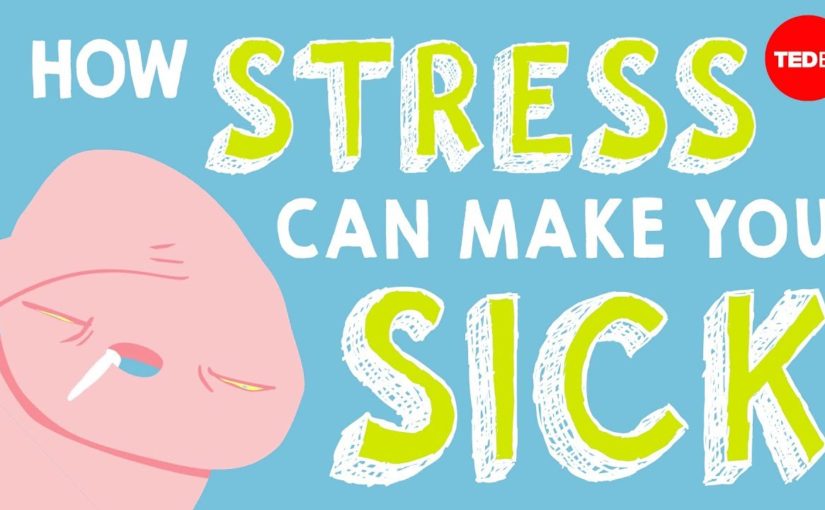
 It is an organ
that actively releases hormones and immune system chemicals
called cytokines that can increase your risk
of developing chronic diseases, such as heart disease
and insulin resistance. Meanwhile, stress hormones
affect immune cells in a variety of ways. Initially, they help prepare
to fight invaders and heal after injury, but chronic stress can dampen function
of some immune cells, make you more susceptible to infections,
and slow the rate you heal. Want to live a long life? You may have to curb your chronic stress. That’s because it has even been
associated with shortened telomeres, the shoelace tip ends of chromosomes
that measure a cell’s age. Telomeres cap chromosomes to allow DNA to get copied
every time a cell divides without damaging
the cell’s genetic code, and they shorten with each cell division. When telomeres become too short,
a cell can no longer divide and it dies. As if all that weren’t enough, chronic stress has even more ways
it can sabotage your health, including acne, hair loss, sexual dysfunction, headaches, muscle tension, difficulty concentrating, fatigue, and irritability. So, what does all this mean for you? Your life will always be filled
with stressful situations. But what matters to your brain
and entire body is how you respond to that stress. If you can view those situations
as challenges you can control and master, rather than as insurmountable threats, you will perform better in the short run
and stay healthy in the long run.
It is an organ
that actively releases hormones and immune system chemicals
called cytokines that can increase your risk
of developing chronic diseases, such as heart disease
and insulin resistance. Meanwhile, stress hormones
affect immune cells in a variety of ways. Initially, they help prepare
to fight invaders and heal after injury, but chronic stress can dampen function
of some immune cells, make you more susceptible to infections,
and slow the rate you heal. Want to live a long life? You may have to curb your chronic stress. That’s because it has even been
associated with shortened telomeres, the shoelace tip ends of chromosomes
that measure a cell’s age. Telomeres cap chromosomes to allow DNA to get copied
every time a cell divides without damaging
the cell’s genetic code, and they shorten with each cell division. When telomeres become too short,
a cell can no longer divide and it dies. As if all that weren’t enough, chronic stress has even more ways
it can sabotage your health, including acne, hair loss, sexual dysfunction, headaches, muscle tension, difficulty concentrating, fatigue, and irritability. So, what does all this mean for you? Your life will always be filled
with stressful situations. But what matters to your brain
and entire body is how you respond to that stress. If you can view those situations
as challenges you can control and master, rather than as insurmountable threats, you will perform better in the short run
and stay healthy in the long run.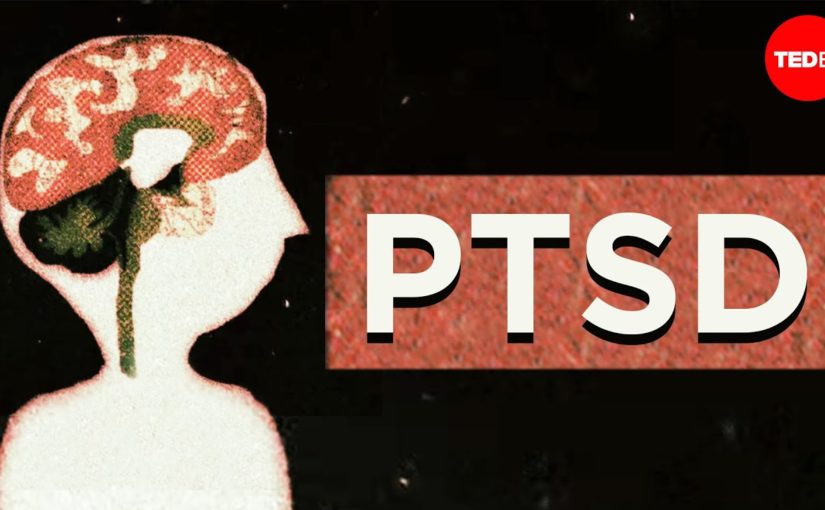
 For example, the smell of a campfire could evoke the memory of being trapped
in a burning house. For someone with PTSD, that memory activates the same
neurochemical cascade as the original event. That then stirs up the same feelings
of panic and helplessness as if they’re experiencing
the trauma all over again. Trying to avoid these triggers,
which are sometimes unpredictable, can lead to isolation. That can leave people feeling invalidated, ignored, or misunderstood like a pause button has been
pushed on their lives while the rest of the world
continues around them. But, there are options. If you think you might
be suffering from PTSD, the first step is an evaluation
with a mental health professional who can direct you toward
the many resources available. Psychotherapy can
be very effective for PTSD, helping patients better
understand their triggers. And certain medications
can make symptoms more manageable, as can self-care practices,
like mindfulness and regular exercise. What if you notice signs of PTSD
in a friend or family member? Social support, acceptance, and
empathy are key to helping and recovery. Let them know you believe their
account of what they’re experiencing, and that you don’t blame them
for their reactions. If they’re open to it, encourage them to seek evaluation
and treatment. PTSD has been called “the hidden wound” because it comes
without outward physical signs. But even if it’s an invisible disorder,
it doesn’t have to be a silent one.
For example, the smell of a campfire could evoke the memory of being trapped
in a burning house. For someone with PTSD, that memory activates the same
neurochemical cascade as the original event. That then stirs up the same feelings
of panic and helplessness as if they’re experiencing
the trauma all over again. Trying to avoid these triggers,
which are sometimes unpredictable, can lead to isolation. That can leave people feeling invalidated, ignored, or misunderstood like a pause button has been
pushed on their lives while the rest of the world
continues around them. But, there are options. If you think you might
be suffering from PTSD, the first step is an evaluation
with a mental health professional who can direct you toward
the many resources available. Psychotherapy can
be very effective for PTSD, helping patients better
understand their triggers. And certain medications
can make symptoms more manageable, as can self-care practices,
like mindfulness and regular exercise. What if you notice signs of PTSD
in a friend or family member? Social support, acceptance, and
empathy are key to helping and recovery. Let them know you believe their
account of what they’re experiencing, and that you don’t blame them
for their reactions. If they’re open to it, encourage them to seek evaluation
and treatment. PTSD has been called “the hidden wound” because it comes
without outward physical signs. But even if it’s an invisible disorder,
it doesn’t have to be a silent one.
